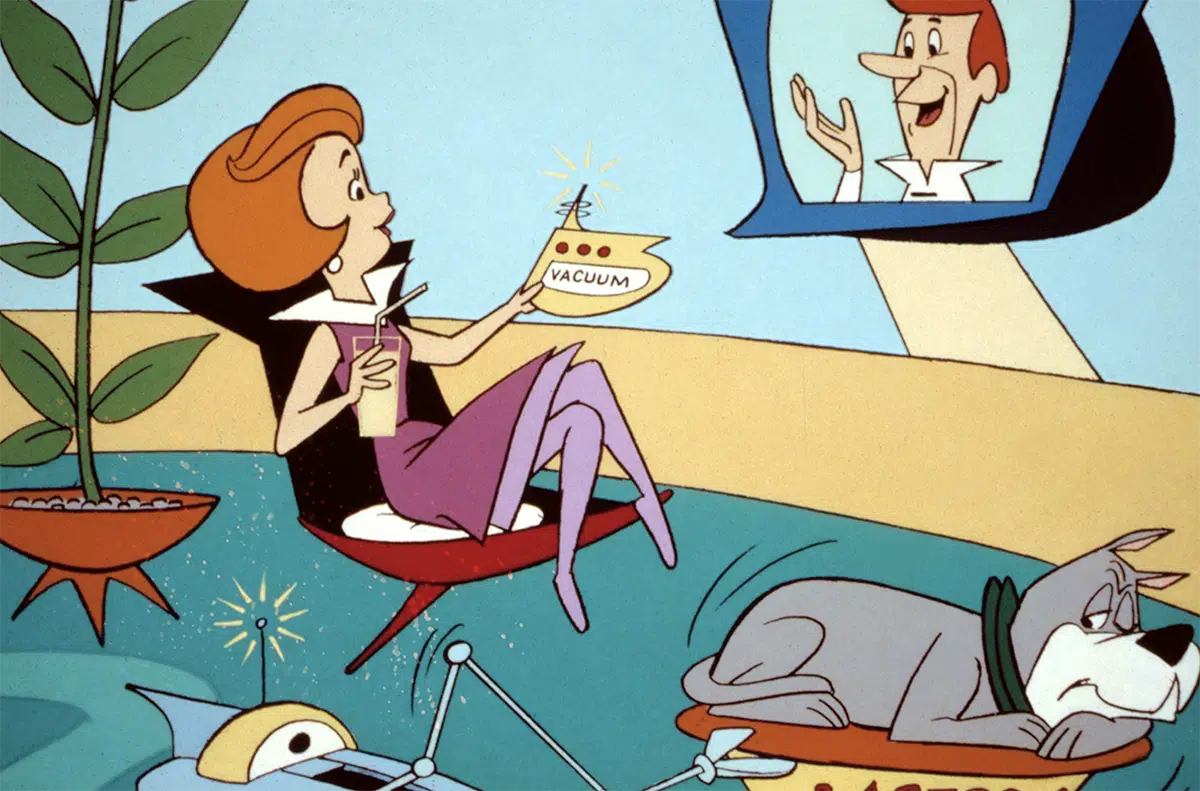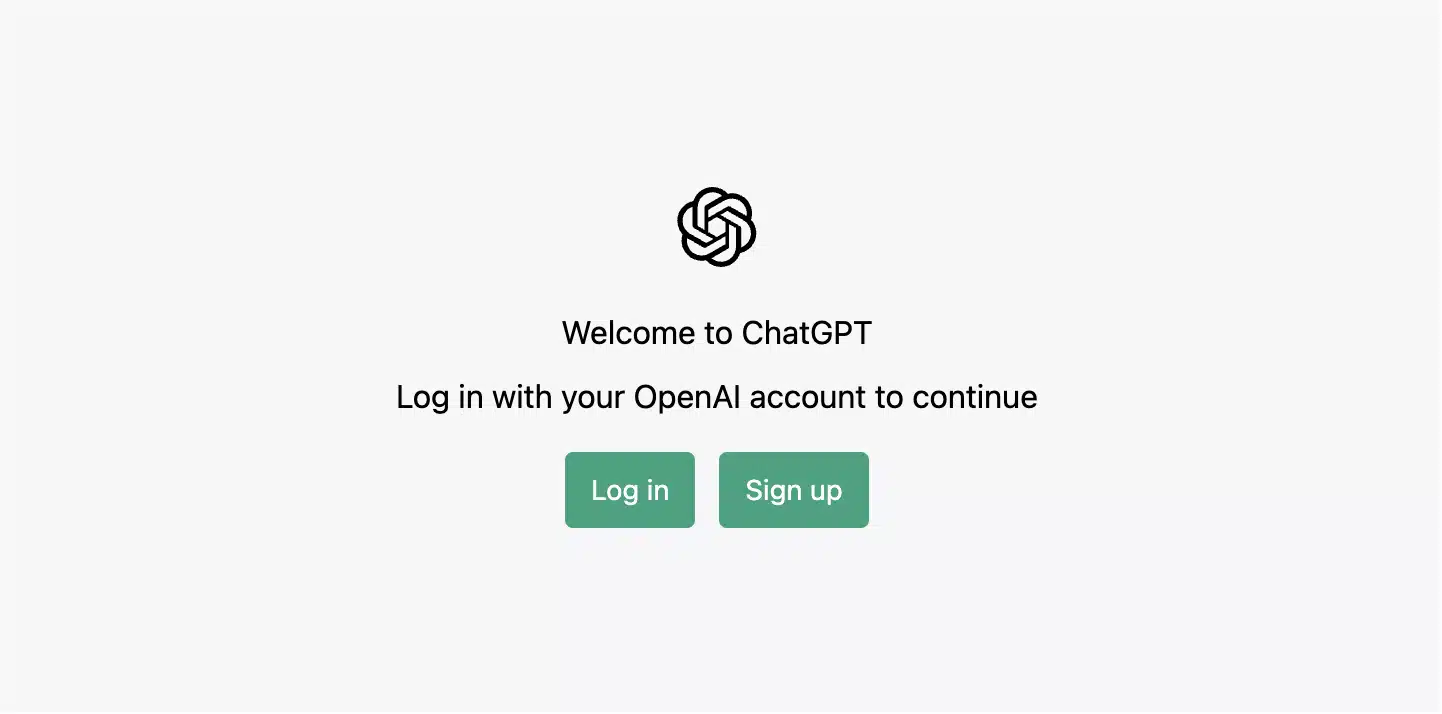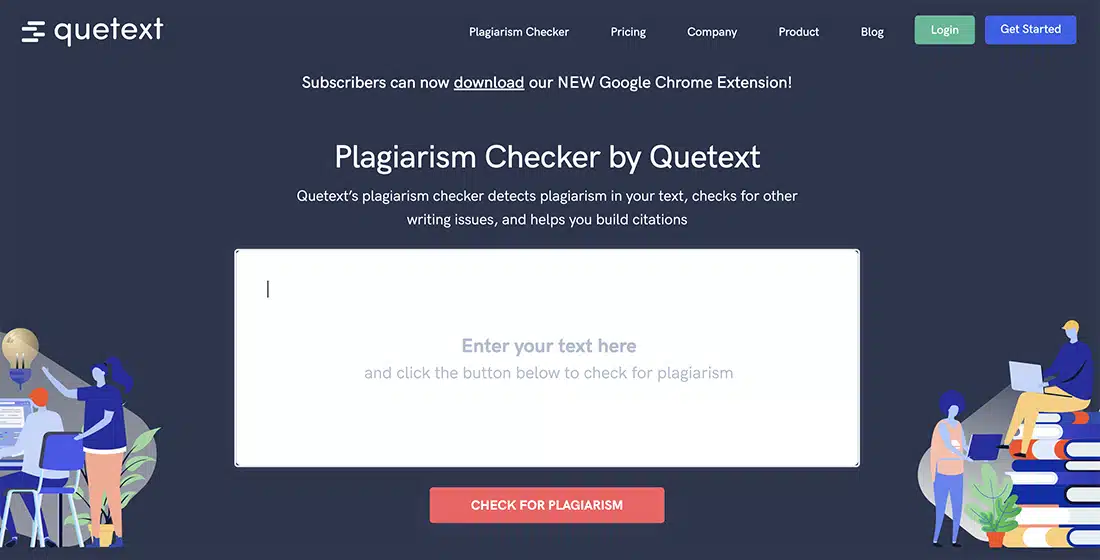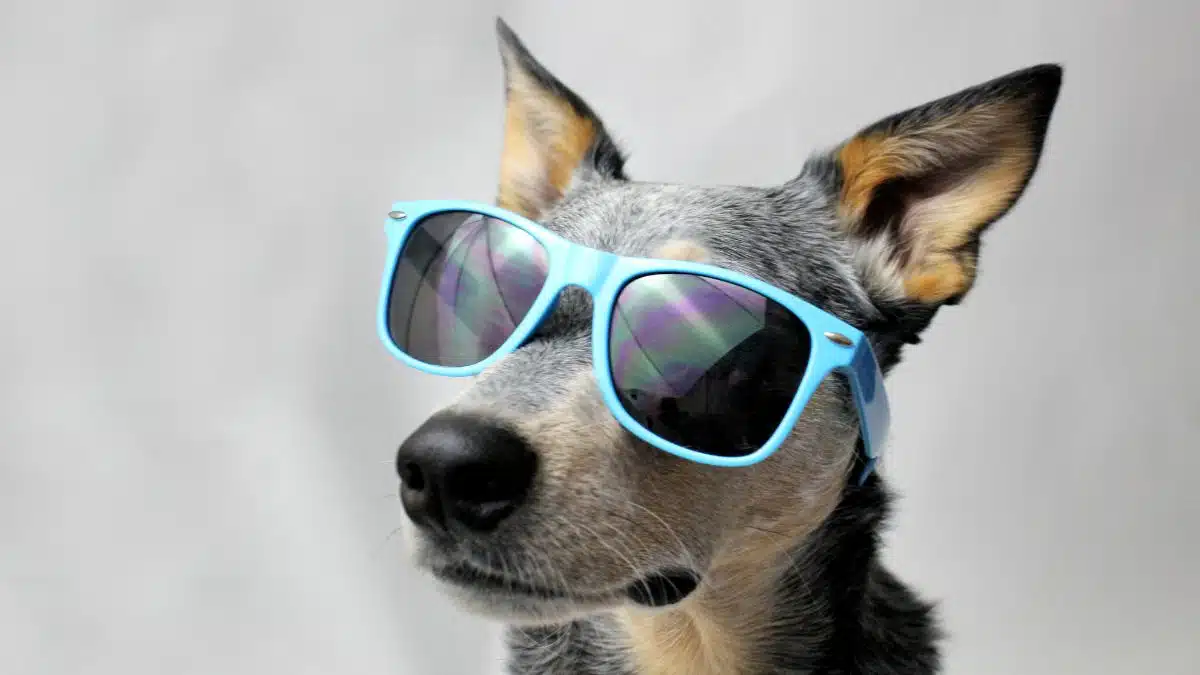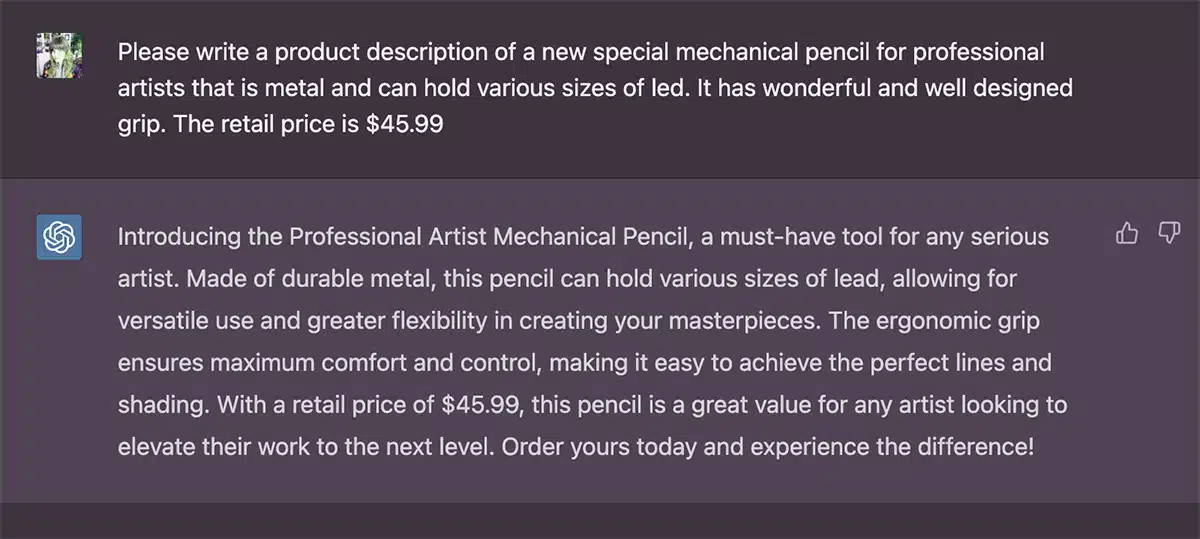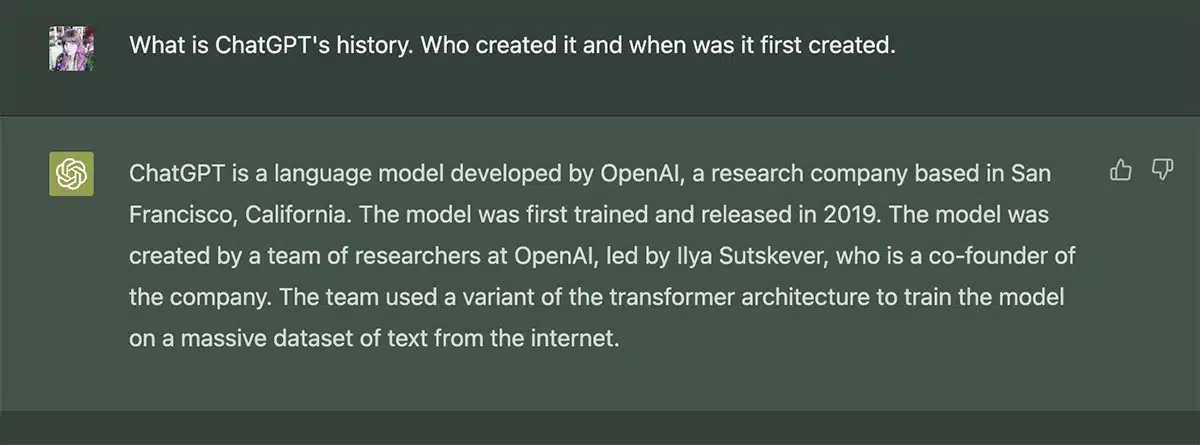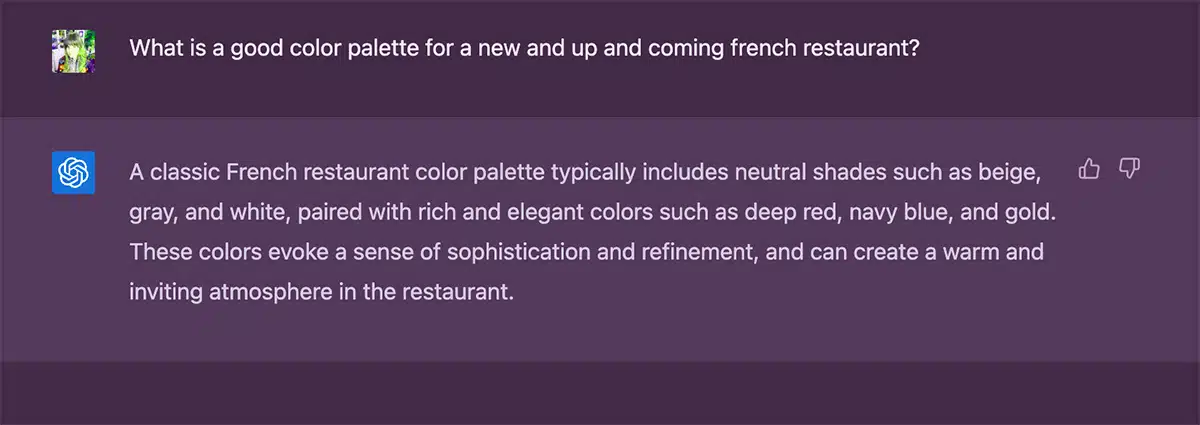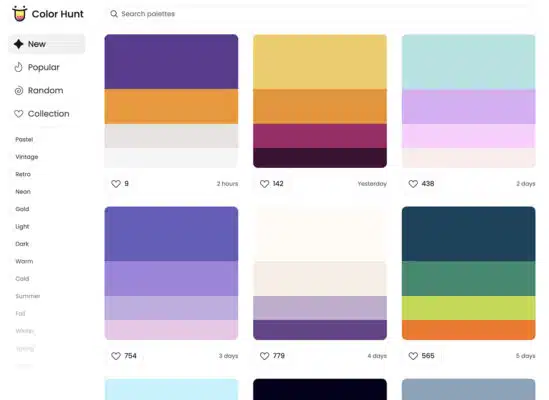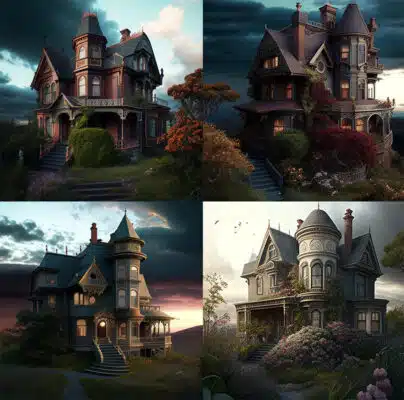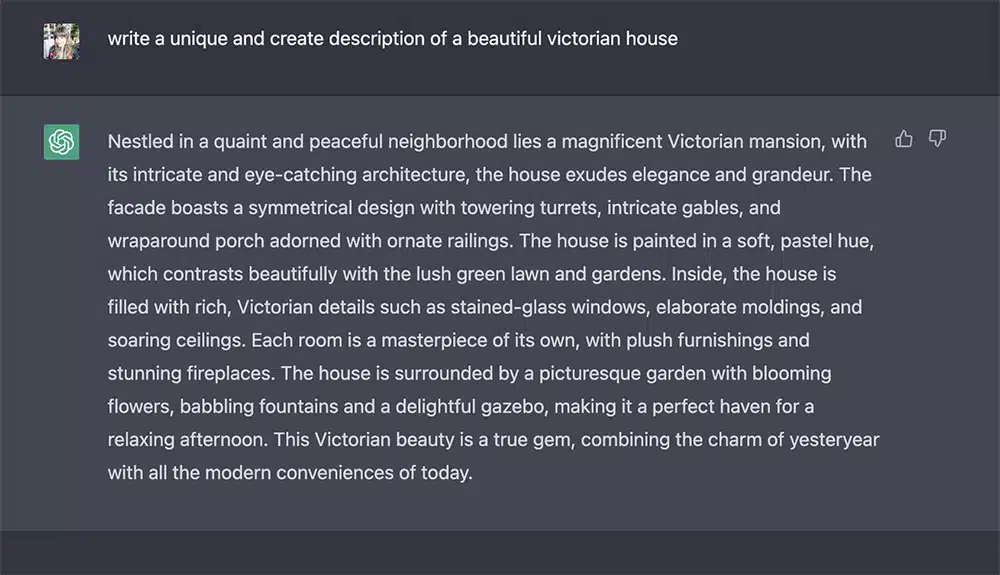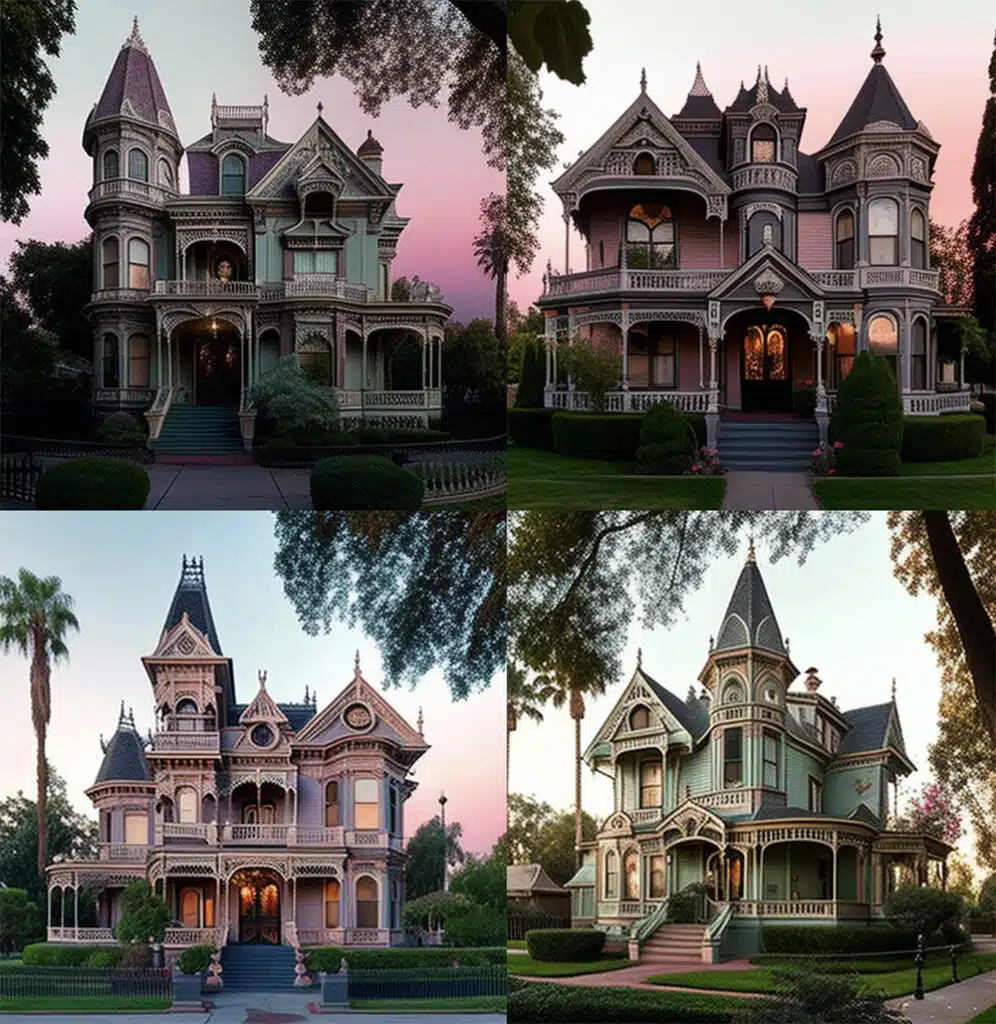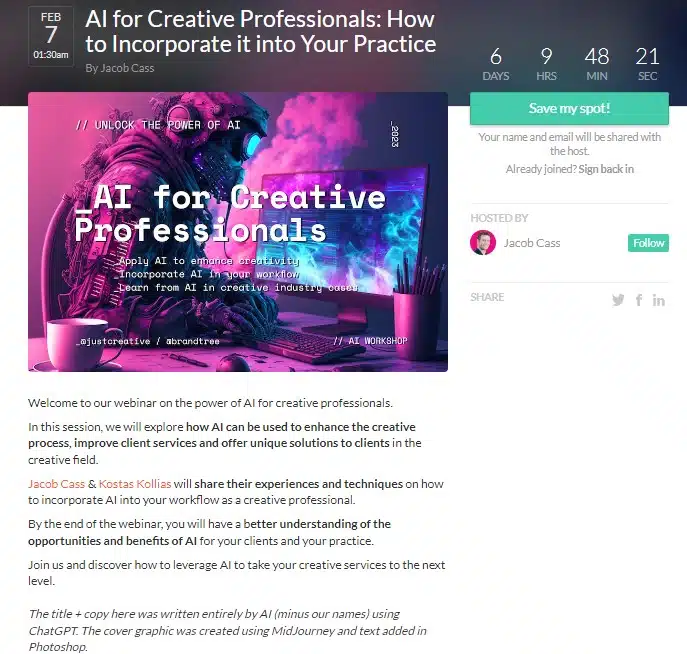Unlock your creative potential with the power of ChatGPT – learn how with this beginner’s guide for graphic designers & creative professionals.
Similar to other AI (Artificial Intelligence) platforms, ChatGPT is becoming a household name.

ChatGPT and other AI technologies (see best AI tools) are mind-bending, innovative, and empowering.
We might be on our way to becoming the real-life Jetsons. Cool.
If you don’t know who the Jetsons are – perhaps I have aged myself.
We are becoming the Jetsons.
According to Wikipedia, “The Jetsons is an American animated sitcom that originally aired from September 23, 1962, to March 17, 1963, on ABC, then later aired in reruns and new episodes from 1985 to 1987. The Jetsons live in a comical version of the future with elaborate robotic contraptions, aliens, holograms, and whimsical inventions.”
When it originally aired back in the 60s, some TV was still in black and white. No one had ever heard of cable TV, let alone cell phones. Even when it aired again in the 80s, technology was still very far from where it is today.
Various technological advancements shown in Jetson’s TV show became a part of today’s society. Cell phones and talking to people via video (Skype/Zoom) are just some of what came true, yet, we still don’t have flying cars or the ability to teleport.
However, don’t give up. The future of technology is so bright you might want to wear shades (sunglasses).
Enter ChatGPT.
Getting Started with ChatGPT
ChatGPT is one of the future-focused technologies that is growing at the impressive speed of those flying cars from the Jetsons.
It is accomplishing things that are beyond imaginable. In this blog, we will explore some of these amazing things and how creative professionals can use ChatGPT to help in branding, design, and marketing.
Getting started with ChatGPT is easy as typing into Google. You can access it through OpenAI’s website through their chat interface, or for advanced users, through their API.
Sign up for free and enter your prompt. It’s that easy!
However, to truly harness its full potential, it’s important to understand its capabilities and limitations and to know how to structure your inputs to receive the best results. We will take a look at this below.
Benefits of ChatGPT
ChatGPT is revolutionizing the way creative professionals work. So whether you’re a writer, designer, marketer, strategist or branding professional, listen up!
ChatGPT can help you ideate by generating fresh and unique ideas, assist in research by finding relevant information and summarizing articles, and support content creation by providing suggestions for titles, outlines, and complete articles or scripts. And much more.
It can also be used to proofread and edit work, catch grammar mistakes, and offer improvement suggestions. We will take a look at a few of these below.
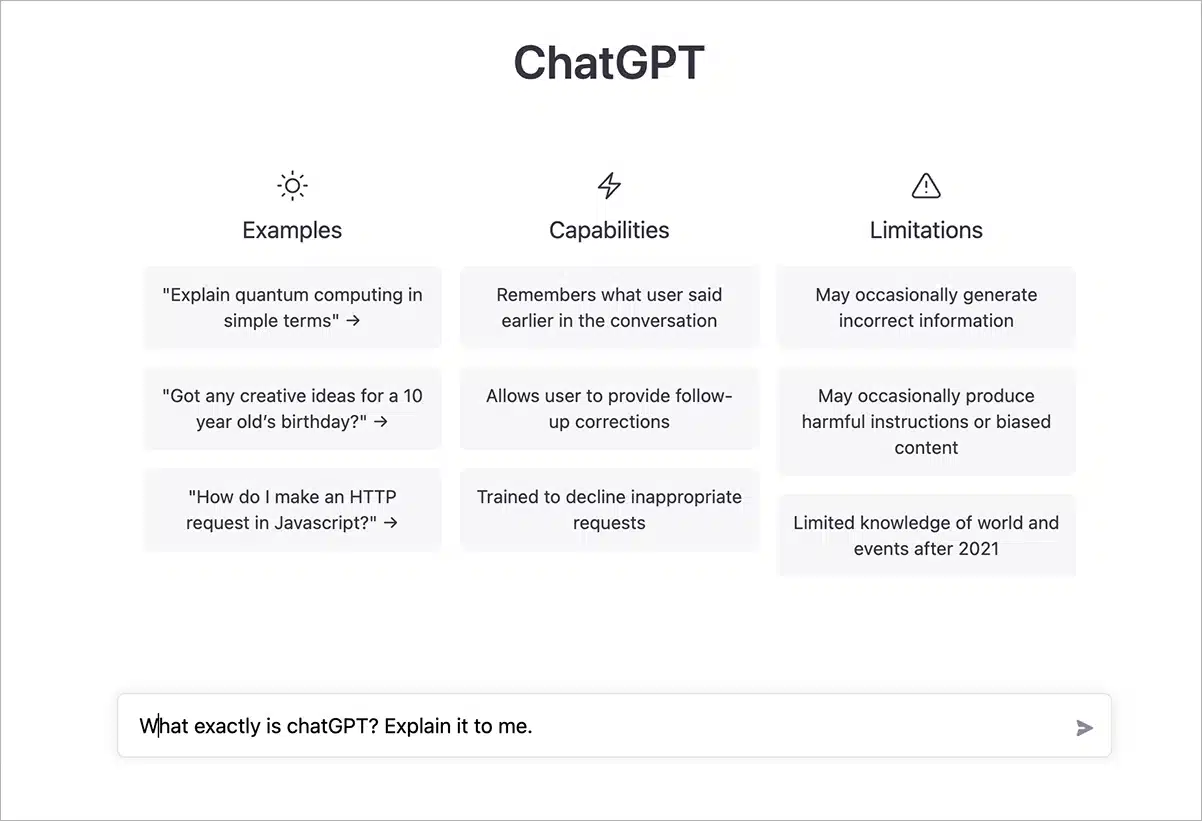
What exactly is ChatGPT?
I thought it might be fun to let ChatGPT answer the question itself – for us. As you can see above, I typed in the question “What exactly is chatGPT? Explain it to me.” into ChatGPT’s input area and click the little arrow on the right. It took a moment to think and compute the answer.
According to ChatGPT:
“ChatGPT is a type of language model developed by OpenAI. It is a variant of the GPT (Generative Pre-trained Transformer) model, which is trained to generate human-like text.
The main difference between GPT and ChatGPT is that the latter is specifically fine-tuned for conversational language and is designed to generate more coherent and natural responses in a conversation.
It uses machine learning to understand the context of a conversation and respond appropriately. It can be used for a variety of natural language processing tasks such as chatbots, language translation, and question answering.”
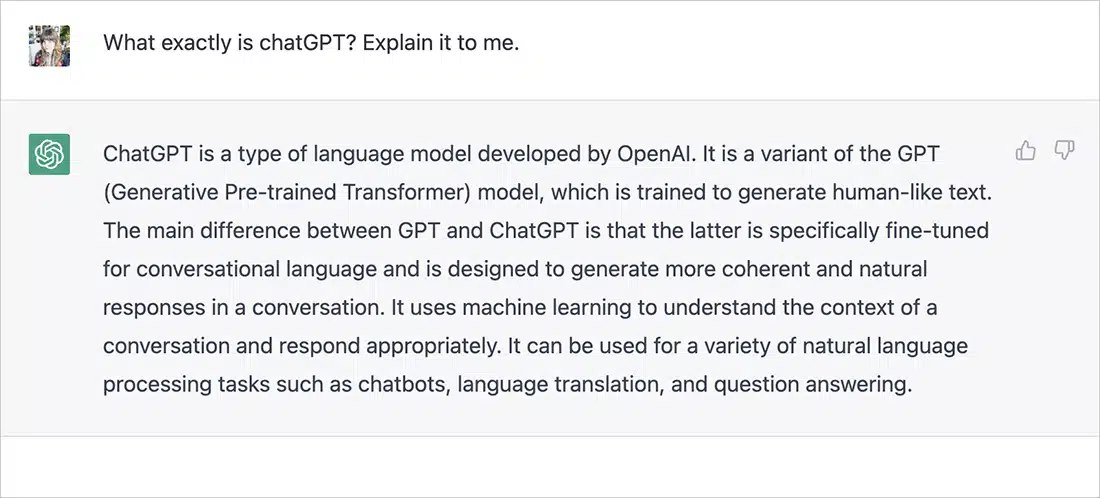
Although the above definition might be a little technical, in layman’s terms, ChatGPT is a language model developed by OpenAI, which uses machine learning techniques to generate human-like text.
ChatGPT can perform a variety of tasks, such as answering questions, doing research, language translation, understanding things better, creative brainstorming, writing, and troubleshooting code, and so much more. It’s a pretty remarkable tool. Imagine all the things you can do.
Harness the full power of ChatGPT. Become a Certified ChatGPT Expert.
What is Machine Learning?
As we step into learning about AI, Machine Learning (ML) is talked about quite a bit so let’s get to know a little bit more about Machine Learning.
Machine Learning is a method for making computers smarter by allowing them to learn from experience. This involves building mathematical models that allow computers to make predictions or decisions based on data inputs.
The more we share with the machine, such as specific types of data or information. The more the machine learns so it can become better at doing the task assigned to it.
This is similar to how humans learn. However, this learning is done at a speed that most humans can’t, which is one of the reasons that it is so unique and valuable as a tool as well as helpful for many tasks.
Use ChatGPT With Caution / Watch Out For Plagiarism
Like anything new, there are kinks, issues, and things that come up to watch out for.
Before we get you too excited about how it can be used for branding, design, and marketing, we must take into consideration important things to know about when using ChatGPT.
ChatGPT pulls from the internet things that already exist, which means the content it is pulling for you may, in fact, be copyrighted or written by someone else, which makes it plagiarism if you use it.
Plagiarism is the act of using someone else’s work or ideas without giving them proper credit, which can damage your reputation.
One of the main issues is that ChatGPT does not provide where the information is coming from. This makes it so you can’t even properly cite the information you have acquired if you want to use it.
How to Avoid Plagiarism From ChatGPT
A quick way to check where the text you get from ChatGPT comes from is by using plagiarism-checking software. See the two below:
- Originality.AI is for serious publishers and it will put you in control of checking your content’s originality by identifying any plagiarism and detecting if AI tools were used to create the content. Their rate is $0.01 per credit, and 1 credit scans 100 words.
- Qutext is another option and it will let you check a text only once a day, and if you want to do it more often for yourself or to check others’ work, check out their pricing.
Another workaround for making sure the text you are using is not plagiarism is to use the information from ChatGPT so that you can use it to share in your own way if you find it pertinent to do so. Never use text automatically generated from ChatGPT; it is almost always text that belongs to a business, brand, or website.
Since ChatGPT is a place where you want to be careful of plagiarism, it is also a place to ask “how to avoid plagiarism with ChatGPT?” to see the advice that it may give to its users. Here is the answer that ChatGPT gave below.
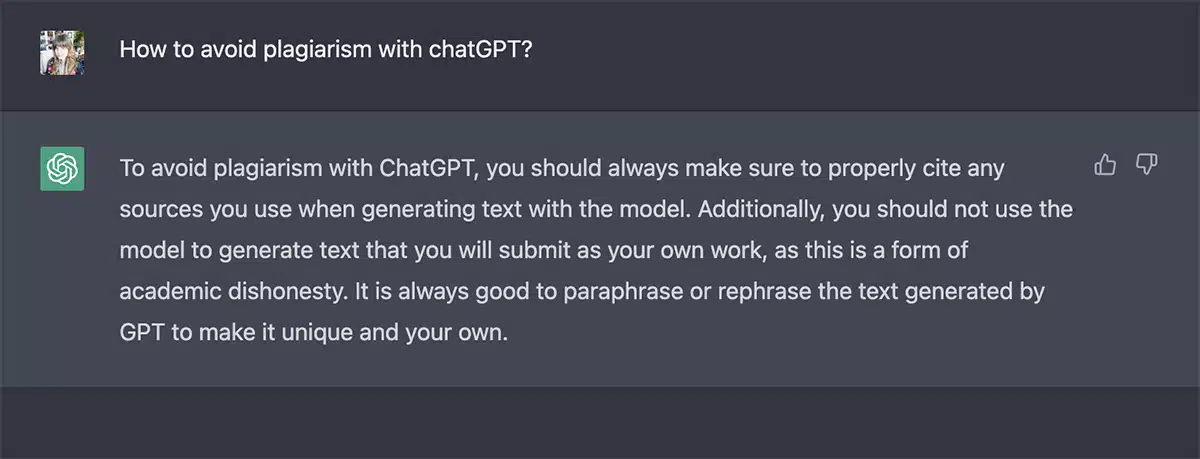
Tips for Effectively Utilizing ChatGPT
Here are some tips for effectively using ChatGPT to enhance your creative workflow:
- Provide clear and specific inputs. Learn from your prompts & results.
- Ensure that you provide context for the model to better understand your requests
- Experiment with different input structures and parameters for the best results
- Be open to new and unexpected ideas generated by the model.
- Try browser extensions like AIPRM (Visit AIPRM site)
- Always fact-check and verify the information generated by the model
Don’t get scared:
Who’s scared? Numerous people are terrified of AI technologies.
I want to address this fear of AI technologies before we move on to the more fun and creative parts of the article. I get it. I can relate to all the questions, concerns, and worries of those in various fields that are being affected by the introduction of AI.
However, the simplest way to look at it is that with all types of evolution, even technological evolution, there is no stopping it. The world and technology will ever evolve, no matter if you approve or not. As much as that might sound harsh to some, I am a realist, and it is the reality that we face every day.
Sure, it can be scary, and at times, it can also feel so strange and exciting. The best way to adapt to these changes that will not be stopped is to find a way to use them to your advantage. Finding ways to embrace it is the best way to get ahead of the fear and ahead of the game!
Those that adapt – win.
Adapting Means Getting Creative
In life, we learn to adapt to things that we both like and don’t like based on if something can be changed or not. Once you realize that something can’t change, you can either hide away and wish it to go away or find ways to adapt.
It’s important to note that the path to adapt to AI will be different for everyone and will depend on how someone uses it and what industry they are in. As we adapt to AI, remember that AI is adapting too. Both are moving targets and are always learning.
Adapting is a superpower for most creatives and marketers! Most people in the design and marketing industries are working with moving metrics, algorithms, societal changes, and so much more as they do what they do. Adapting is not a choice; it is a requirement in the field.
This means we are expected to take new technologies and make them work for us so that we can do more creative, unique, and innovative work.
We got this. Grab your shades!
The Creative, Innovative, and Exciting Parts of ChatGPT.
It’s always important to talk about the dark side of any topic as much as it is important to talk about the sunny side. Everything has its balance. Did you grab your shades? It is about to get bright, shiny, and a lot of fun. Let’s jump in!
As a person who has been in the world of branding, marketing, and design for decades, I have seen my share of technological advancements, but AI is truly a whole other level of advancement that is revolutionizing how we will work, interact and do business.
Using AI tools can help you be more efficient, free up time, and be an interesting ally to have on your side. Let’s explore some of the ways ChatGPT and AI, in general, can be powerful tools.
1. Write Better Copy
Have you ever been stuck when writing a social media post, product copy, or marketing copy? I know, just like me, you have looked at a small paragraph of text for 3 hours and have hit a brick wall. No one is around to bounce ideas off of and it is Friday, and our brain is fried. ChatGPT is the perfect tool to reach when needing some copy help.
An example of how this works is below. Say I work for a company that is launching their new mechanical pencil, and I am just going around in circles trying to write the product description but can’t seem to get anything that “feels right”. Let’s use ChatGPT to help us brainstorm.
Of course, I would never use this word for word, but it is a powerful tool for brainstorming. ChatGPT uses terms like “durable metal,” “flexibility in creating your masterpieces,” and “perfect lines,” which are all very descriptive and can be used to help you get a jump start on the perfect product description.
It is as good as the lifeline “Phone a Friend” from “Who Wants to Be A Millionaire,” yet it is a lot more reliable and will always pick up (answer).
2. Researching & Information Gathering
Google is great and can provide you with a lot of information when you need it, but ChatGPT is taking it to a whole new level. I would not be surprised if Google does not create its own version of ChatGPT or tries to buy OpenAI, ChatGPT’s creator.
When writing a blog like this one, ChatGPT can help you gather some data that you need to research. I have used ChatGPT numerous times in this blog already, but let’s see how it works when asking a specific question that we will choose just for this blog post.
Let’s pretend that we are writing a blog about the history of ChatGPT and want to gain information about that to help us in the presentation of our blog. Just ask ChatGPT.
We asked ChatGPT about its history. Here is the answer:
ChatGPT is a language model developed by OpenAI, a research company based in San Francisco, California. The model was first trained and released in 2019. The model was created by a team of researchers at OpenAI, led by Ilya Sutskever, who is a co-founder of the company. The team used a variant of the transformer architecture to train the model on a massive dataset of text from the internet.
If we planned to use this in an article that presented this data, we would rewrite it in our own voice and not take it word for word. The idea is to get the information and then find ways to use it appropriately.
3. Color Palettes with AI
If you need to find a color palette for a brand that you are working on logo and branding for, let ChatGPT help you do that effortlessly.
We asked ChatGPT about a French restaurant color palette. Here is the answer:
“A classic French restaurant color palette typically includes neutral shades such as beige, gray, and white, paired with rich and elegant colors such as deep red, navy blue, and gold. These colors evoke a sense of sophistication and refinement and can create a warm and inviting atmosphere in the restaurant.”
Although these colors might not be the perfect fit for your brand design vision, they can help inform you of an option as a direction that you could go or avoid in your design process.
Maybe by learning about this typical branding, you may find a way to stray away and be more innovative in your design. You may also be working with a client that is very traditional and may want to stick to the classic style in their branding. Either way, it can help you think about color beyond just scrolling through the internet for a color palette.
If you like to look at colors, check out Color Hunt and Coolors to play with color palettes.
4. Use ChatGPT To Create AI Art Prompts
AI art-generating programs like Midjourney, Stable Diffusion, and Lensa. These programs create art when using a “prompt.” A prompt is a typed description of what you want the artwork or composition to look like.
ChatGPT can be used to help build and expand your prompts. If you are not sure even what making AI-generated art is or how to make it, we give you full directions on how to make AI-generated art from start to finish with Midjourney.
You can use something as easy as Canva to do text-to-image AI-generated art. When using ChatGPT to improve your prompts, you can take your art concepts to a whole new level.
For example, we put the prompt “beautiful Victorian house on a hill” in MidJourney to see what results we would get. The results are beautiful, but imagine if we worked with ChatGPT to create a better prompt. Let’s give it a try!
Above is the question we asked in the in-depth prompt that ChatGPT created. The question we asked was pretty quick to get such an in-depth description.
As you use prompts, remember you can change anything in your prompt to be more fitting to your needs.
For example, this one says “lush green lawns,” but perhaps you would rather say “snowy landscapes at dusk.” It is all in your control.
So let’s see what Midjourney created with the assistance of ChatGPT for a better prompt. Although the one below might be a little less whimsical, it sure took on all the instructions of the house’s architecture and design and refined it well.
If you want the house to have a more magical feel, you can also go ahead and add that to the description as well.
AI-generated art is also taking the world by storm, just like ChatGPT. AI-Generated Art Is Changing Art & Design in so many ways that it is almost impossible to keep up, but it is exciting!
Join In The Fun / New Workshop: “AI for Creative Professionals: How to Incorporate it into Your Practice.”
If you want to learn more about this topic, join Jacob Cass & Kostas Kollias for a workshop where they will share their experiences and techniques on incorporating AI into your workflow as a creative professional.
By the end of the webinar, you will have a better understanding of the opportunities and benefits of AI for your clients and your practice.
WATCH HERE: AI for Creative Professionals
The Power of ChatGPT For Creative Professionals in Branding, Design, And Marketing
ChatGPT is a valuable tool for creatives, branding experts, designers, and marketers. It can save time and effort in creating content, such as product descriptions, social media posts, and email marketing campaigns, and even improve creative concepts.
Additionally, ChatGPT’s ability to generate ideas and brainstorm can spark inspiration for new and innovative marketing strategies.
By following the tips outlined in this guide, you can get the most out of ChatGPT and streamline your workflow. Whether you’re looking to generate new ideas, research a topic, create AI art or content, or proofread your work, ChatGPT is a great place to start.
So, why not give it a try today and see what it can do for you and your creative projects?
It will enhance the efficiency and effectiveness of any creative or marketing team!
More AI Resources
- Adobe Firefly Review
- Best AI Art Generators
- Best AI Photo Editors
- How to Make AI Art
- How AI Art is Changing Art & Design
About the author: Aunia Kahn is a web and graphic designer, digital marketer, and internationally awarded fine artist. She is the owner of Rise Visible and has been passionately working in the industry since 1998. As a content writer, her contributions focus on innovative technologies, women in STEM, and disability visibility in business.

